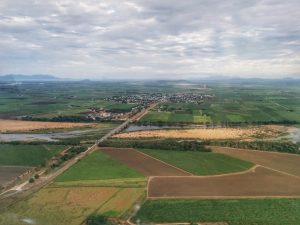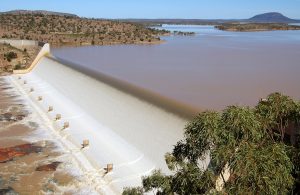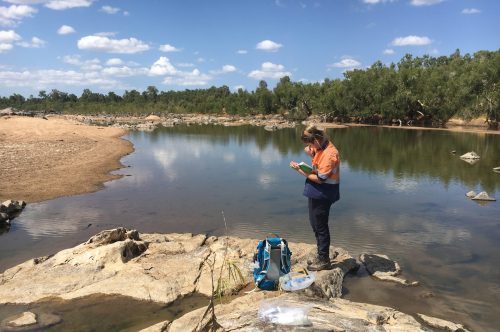Mercury (Hg) is a toxic heavy metal that has gained recent attention in Australia during the last few years, especially as Australia’s commitment to the Minamata Convention (focused on reducing anthropogenic release of Hg into the environment) came under review in 2020. The Burdekin River is the largest catchment in Queensland and contributes the largest source of suspended sediment to the Great Barrier Reef. Legacy gold mines are prevalent throughout the catchment near Charters Towers and Ravenswood and have ongoing potential to be a source for Hg release.
Initial studies in 2016 indicated possible Hg dispersion from an upstream abandoned gold mine in the Tully River catchment region used for sugar cane cultivation. Samples were also collected in 2016 at the Burdekin River Flinders Highway crossing showing labile mercury in the river water. In June 2019, the case study was developed for Hg dispersion from historical and current gold mining sites for the purpose of developing a large scale Queensland-wide abandoned mines project to address: (i) The extent of Hg contamination in the Burdekin River (ii) The mechanisms controlling Hg dispersion: (iii) How particle size fraction plays a role in the Hg transport process: and (iv) The risk to aquatic biota in the environment and human health.

Almost every wet season the Burdekin River floods and via the Burdekin Falls Dam (BFD), transports dislodged fine sediment material and heavy metals downstream to the estuary. The current national and international commitment to the Minamata Convention identify to quantify and reduce concentrations of anthropogenic mercury. Mercury has the capacity to bioaccumulate and bio-magnify across food chains, posing as a risk even at low concentrations. This study has quantified concentrations of total mercury (THg) within the Burdekin River catchment (median/mean=0.05 µg/L).

The link between legacy gold mining developments and Hg concentrations present in both water and sediment has been investigated. Samples (n=60) were collected during the dry season over a period of four sampling campaigns 2016, 2018, 2019 and 2020. Unfiltered (total), filtered (<0.45 um) and labile (Hg Diffusive Gradient Thin Films (DGT) <0.01µm) concentrations were measured in river waters from the upper to the lower estuarian catchment in the Burdekin River. Speciation modelling using Visual MINTEQ showed that Hg was mainly bonded with fulvic acids containing either carboxylic (FA1) or phenolic groups (FA2) with Hg (>99% FA2-Hg and <1% FA1-Hg) at all sites above the estuary and minor (<5%) HgCl2 with FA2-Hg at one site where chloride had increased.
Dispersion mechanisms driving Hg transport were evaluated by quantifying the particle size distribution of sediments (600 and 1000 µm) and the prevalence of Hg concentrations within the filtered (<0.45µm) fraction in water. At the DGT sample sites with measured values, water samples demonstrate that 99% of Hg concentrations dominated the colloidal fraction. This suggests that during wet season flooding events Hg concentrations are included in the primary size fraction that transfer over the Dam wall.
Lead isotope ratio data for 204Pb and 206Pb identified associations of sediment and water with geogenic formations based on the known decays of Th and U and demonstrates that water and sediment samples are younger that geogenic ratios associated with Charters Towers and Ravenswood regions, suggesting Hg concentrations measured during the dry season are unrelated to legacy gold mining. A preliminary ecological risk assessment of Hg concentration findings in this study demonstrates low risk of exposure to aquatic species. Cattle drinking river water are unlikely to be affected based on the Hg concentrations captured in the samples collected during this study.
This study is a part of a major collaborative research initiative “Evaluation of rare earth and heavy metals transfer along the Burdekin River” between University of Queensland (UQ) and Queensland Health Forensic and Scientific Services (QHFSS).
By Barry N. Noller and Fiona H. M. Henderson (The University of Queensland) and Tatiana Komarova, Matthew Cross and Eva Comino (Queensland Health Forensic and Scientific Services)


Twitter